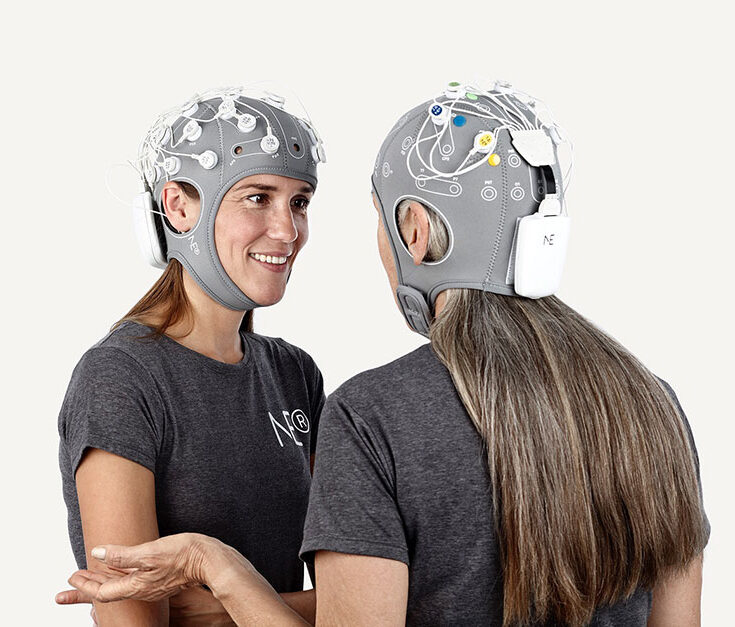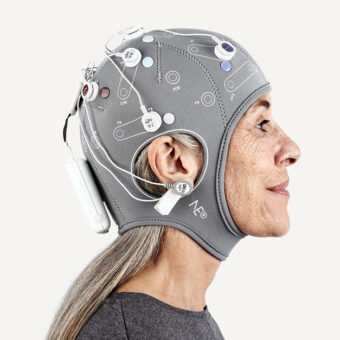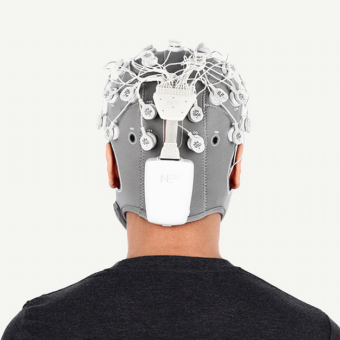In the dynamic field of neuroscience, EEG biomarkers have emerged as powerful tools, shedding light on the intricate workings of the human brain. A biomarker, in essence, is a measurable indicator of a biological state or condition. These can range from molecules in the blood to specific physiological responses, providing valuable insights into the health and functioning of various systems within the body. In this blog post, we explore how EEG biomarkers unveil the complex mechanisms at play within the human brain. Join us in delving into EEG biomarkers!
Decoding EEG Biomarkers
EEG biomarkers, a subset of biomarkers, utilize electroencephalography to measure electrical activity in the brain. EEG records the electrical patterns generated by neurons, offering a real-time glimpse into brain function. This non-invasive technique has become indispensable in deciphering the complexities of neurological disorders, cognitive processes, and mental health.
As we navigate the landscape of EEG biomarkers, it’s essential to recognize their multifaceted utility. These biomarkers play a pivotal role in diagnosing and understanding neurological disorders such as epilepsy, Alzheimer’s disease, and ADHD. By capturing aberrations in brain activity, they provide clinicians with invaluable data for early detection and intervention.
Examples of EEG biomarkers include P300, which indicates cognitive processes; Mu rhythm, linked to motor disorders; and spike and wave discharges, crucial in epilepsy diagnosis. Furthermore, Alpha power reflects cognitive states, while the Theta/Beta ratio aids ADHD diagnosis; Delta power during sleep assesses sleep stages. Event-related potentials (ERPs) in general study cognitive functions, and spectral coherence measures connectivity. In the realm of sophisticated EEG analysis, additional biomarkers emerge, delving into the intricacies of brain dynamics. For example, Granger causality, a complex analytical framework, provides directional influences among brain regions, offering a profound understanding of connectivity patterns. Entropy measures, encompassing metrics like Approximate Entropy or Sample Entropy, offer a perspective on the irregularity and complexity of EEG signals.
Applications of EEG Biomarkers
Beyond diagnosis, EEG biomarkers extend their reach into diverse realms. They act as sensitive indicators of cognitive performance, aiding in assessing attention, memory, and emotional states. Researchers harness the power of these indicators to explore the impact of external stimuli on the brain, unraveling the intricacies of human behavior and cognition.
Moreover, EEG biomarkers have found a crucial role in the realm of clinical trials, providing a non-invasive and objective measure for assessing the effects of drugs on brain function. This extends beyond medications explicitly targeting the brain, encompassing a wide array of pharmaceuticals where understanding the impact on brain activity is paramount.
In drug development, EEG biomarkers serve as sensitive indicators of neuropharmacological effects. They allow researchers to monitor changes in brain activity induced by investigational drugs, aiding in the assessment of safety, efficacy, and potential side effects.
Furthermore, EEG biomarkers play a pivotal role in evaluating the effects on brain function of medications intended for conditions beyond the neurological spectrum, serving as a window into the brain’s response.
In the evolving landscape of precision medicine, EEG biomarkers in clinical trials contribute to a more comprehensive understanding of drug effects on the brain. This nuanced approach not only enhances the safety and efficacy assessment of neuroactive drugs but also ensures a holistic evaluation of diverse pharmaceutical interventions across various medical domains.
As we continue to unravel the intricacies of the human brain, EEG biomarkers stand at the forefront of innovation, guiding the development of safer and more effective medications across the medical spectrum.
Conclusion
As we conclude our exploration, it’s evident that these biomarkers are not mere tools but windows into the complexities of our minds. Their real-time insights offer a dynamic perspective on brain responses, shaping a future where interventions are not only effective but precisely tailored to individual needs. From decoding neurological disorders to guiding drug development, these biomarkers play a pivotal role in advancing our understanding of brain function.
In this ongoing journey to unlock minds, EEG biomarkers stand at the forefront of innovation, lighting the path to a deeper comprehension of the brain and fostering advancements that transcend the boundaries of neuroscience, promising a healthier future.
References:
Buchhalter, J., Neuray, C., Cheng, J. Y., D’Cruz, O., Datta, A. N., Dlugos, D., French, J., Haubenberger, D., Hulihan, J., Klein, P., Komorowski, R. W., Kramer, L., Lothe, A., Nabbout, R., Perucca, E., & Der Ark, P. V. (2022). EEG parameters as endpoints in epilepsy clinical trials – An expert panel opinion paper. Epilepsy Research, 187, 107028. https://doi.org/10.1016/j.eplepsyres.2022.107028
Leiser, S. C., Dunlop, J., Bowlby, M. R., & Devilbiss, D. M. (2011). Aligning strategies for using EEG as a surrogate biomarker: A review of preclinical and clinical research. Biochemical Pharmacology, 81(12), 1408-1421. https://doi.org/10.1016/j.bcp.2010.10.002
Meghdadi, A. H., Karić, M. S., McConnell, M., Rupp, G., Richard, C., Hamilton, J., Salat, D., & Berka, C. (2021). Resting state EEG biomarkers of cognitive decline associated with Alzheimer’s disease and mild cognitive impairment. PLOS ONE, 16(2), e0244180. https://doi.org/10.1371/journal.pone.0244180
Van der Vinne, N., Vollebregt, M. A., Rush, A. J., Eebes, M., Van Putten, M. J., & Arns, M. (2021). EEG biomarker informed prescription of antidepressants in MDD: A feasibility trial. European Neuropsychopharmacology, 44, 14-22. https://doi.org/10.1016/j.euroneuro.2020.12.005



